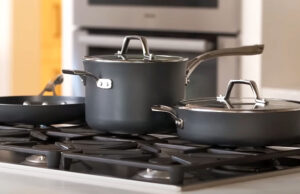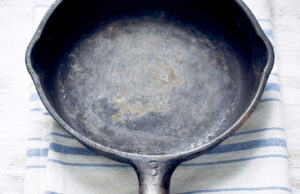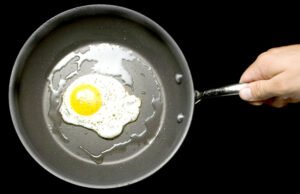As an Amazon Associate, I earn from qualifying purchases at no extra cost to you.
Bosch Dishwasher Speed 60 vs Normal: Which One You Use?
You are probably tired of waiting too long for your dishwasher to finish. Or maybe you wonder if using the fast wash is bad for your dishes. I had the same questions when I first used my Bosch dishwasher. After testing both the Speed 60 and Normal cycles, I found out which one works better and when to use each one. In this article, I will share everything you need to know about Bosch Dishwasher Speed 60 vs Normal. This will help you choose the best setting every time.
What Is Speed 60 and What Makes It So Fast?
The Speed 60 cycle on a Bosch dishwasher is a quick wash setting that takes about 60 minutes. It is made for people who want clean dishes fast. It works well when your dishes are not too dirty or greasy. This option uses hotter water and more energy to finish cleaning in less time.
When I first tried Speed 60, I was in a rush and had guests coming over. My plates had some light food bits, and I didn’t have time to wait 2 hours. To my surprise, the dishes came out very clean and dry. That made me curious to learn more about how it really works.
Speed 60 heats the water to a higher temperature quickly. It also speeds up the wash and rinse parts. It even shortens the drying time. This is how it finishes fast. It does use more water and power compared to other eco-friendly cycles.
It is best to use this setting when your dishes have just a bit of dirt or you washed them recently but need a quick clean. It’s also great for washing cups, glasses, plates, and silverware after breakfast or lunch. But if the dishes are very greasy or have dried food stuck on them, Speed 60 may not clean them fully.
Some people think fast washes are bad for dishwashers. But with Bosch, the Speed 60 is designed carefully so it won’t harm your machine or dishes. However, if used too often, the energy use may increase, and that could affect your power bills over time.
You may also notice that the noise level is a bit higher because the cycle works harder in a short time. Still, most Bosch dishwashers are very quiet, so it’s not a big problem.
If you have small loads or need a fast wash before a party or meal, Speed 60 is a lifesaver. I’ve used it many times without any issue.
- Takes only about 60 minutes
- Best for light or fresh dirt
- Uses more energy and water
- Works with most plates, cups, and glasses
- Not perfect for heavy food stains
- Slightly louder than other cycles
What Is the Normal Cycle and Why Do Most People Use It?
The Normal cycle is the most used setting on Bosch dishwashers. It’s made to clean full loads of dishes with regular to heavy dirt. It runs for about 2 to 3 hours, depending on your model and water pressure.
When I first started using my Bosch dishwasher, I always used the Normal cycle. It seemed like the safest choice. It washes dishes slowly with steady water pressure and medium heat. This helps remove stuck-on food, oil, and sauces.
This cycle is good if you have a big load after dinner. It also works well for pots, pans, and items with dried food. The water and heat are used in a balanced way. This saves energy and gives you clean dishes every time.
One thing I liked is that the Normal cycle adjusts itself. Bosch uses smart sensors to see how dirty the water is. If the water is dirty, the dishwasher rinses more. If not, it finishes earlier. This helps save time and water without you doing anything.
The drying at the end of the cycle is also better. My dishes came out dry and warm. This is because Bosch uses a feature called AutoAir or PureDry. It opens the door or uses hot air to dry dishes better.
But the long cycle time can be annoying. Sometimes I forgot the dishwasher was running because it’s so quiet. Then I opened it too early. So, if you’re in a rush, this cycle is not the best choice.
Still, it is the best for full loads and when you want spotless dishes. It’s also better for dish safety. Because the process is slower, it’s gentle on plastic and glass.
If you care about using less energy and water, this is a better choice than Speed 60. It is also more eco-friendly and gives you peace of mind.
- Takes about 2 to 3 hours
- Good for full loads with stuck-on food
- Saves energy with smart sensors
- Best for long cleaning and drying
- More eco-friendly than fast cycles
- Not good if you’re in a hurry
Cleaning Performance: Which One Gives Better Results?
When it comes to cleaning, both cycles do a good job, but they are made for different needs. If you need fast cleaning for lightly dirty dishes, Speed 60 is enough. But if you want deep cleaning for dishes that sat out for hours, then Normal is better.
I once tried washing spaghetti plates with dried sauce using Speed 60. It didn’t clean them well. The sauce stayed on the forks and bowls. Then I used the Normal cycle, and everything came out shiny and clean.
Speed 60 focuses on time, not heavy cleaning. It uses strong water spray and high heat to clean fast. But it doesn’t soak the dishes long enough to break down dry food. That’s where Normal wins.
Normal takes time, but it lets the detergent and water soak into food. The long rinse and wash time help remove stains better. Even greasy pans came out looking brand new.
One thing to remember is the detergent you use. Some tablets work better in long cycles. In short cycles, they may not dissolve fully. So for Speed 60, you can try liquid or fast-dissolving pods.
Another factor is how you load the dishwasher. In both cycles, dishes should not touch each other. This helps water reach every part. If you overload the machine, even the Normal cycle may not clean well.
In short, use Speed 60 for fresh dirt and light use. Use Normal when your dishes are really dirty or after big meals.
- Speed 60 works well only for light dirt
- Normal gives deeper clean for dried food
- Detergent type matters for best cleaning
- Speed 60 may leave spots if overused
- Normal handles grease, stains, and sauces better
Drying Quality: Which One Leaves Dishes Drier?
Drying is just as important as cleaning. You want dishes to come out dry, not wet or with spots. I tested both Speed 60 and Normal to see which dries better.
Speed 60 dries dishes quickly, but not always fully. Sometimes I opened the dishwasher and found drops on plastic cups or bowls. This is because fast cycles don’t give much time for drying. The heat cools down quickly, and water stays on some items.
Normal cycle, on the other hand, gives more time for drying. It either uses a slow cooling process or opens the door at the end (if your Bosch has AutoAir). This gives a more natural dry. Most of my dishes came out warm and dry, with fewer water marks.
If you need dry plates for storing or using right away, Normal is the better choice. You can also turn on Extra Dry option in both cycles, but it works better in Normal.
One trick I learned is to open the door a little after the cycle. Letting steam out helps drying. But honestly, Normal does a better job without any help.
Also, the material of the dishes matters. Plastic doesn’t dry as well as glass or metal. Bosch dishwashers don’t use a heated drying element, so plastics stay wetter unless you give them extra time.
So, if drying is your focus, go for the Normal cycle. Speed 60 is okay, but not perfect for fully dry dishes.
- Speed 60 dries fast but leaves water on plastic
- Normal gives warm and better dry
- AutoAir helps in drying in Normal
- Extra Dry works better with Normal
- Material of dish affects drying quality
Energy and Water Use: Which One Saves More?
Saving water and energy is good for the planet and your bills. So which cycle is better for this?
At first, I thought Speed 60 would use less because it’s fast. But it actually uses more energy. To clean quickly, it heats the water faster and sprays harder. That means more power in less time.
Normal cycle uses water and heat slowly. It adjusts based on how dirty the water is. If your load is not too dirty, it can save water. Even if it runs longer, it often uses less power overall.
Bosch dishwashers are made to be energy-efficient. But when I checked my power usage, the Normal cycle saved more in the long run. Speed 60 made my dishes clean fast but added a little more to the power bill.
If you use the dishwasher every day, it’s better to stick with Normal. Use Speed 60 only when you are in a rush or have guests.
Water use also depends on the load size. Don’t run the dishwasher half-empty. Try to fill it up without overloading. That way, you get the best use of water and energy.
- Speed 60 uses more energy for fast clean
- Normal saves more energy and water in the long run
- Smart sensors in Normal adjust water use
- Speed 60 is best only for quick small loads
- Normal is better for daily use and eco-saving
When Should You Use Each Setting?
Now that you know how both cycles work, let’s see when to use them. Choosing the right cycle depends on your needs, time, and how dirty your dishes are.
Use Speed 60 when:
- You are in a hurry
- Dishes have fresh or light dirt
- You need clean cups and plates fast
- You want to use the same dishes again soon
- You are washing lunch or breakfast items
Use Normal when:
- Dishes are very dirty or greasy
- You have cooked with oil, sauce, or cheese
- You want deep cleaning and dry results
- You care about saving power
- You are washing a full load
From my own use, I learned to check how dirty my dishes are before picking a cycle. Speed 60 is great for light, fast needs. But for big meals, baking pans, or old stains, the Normal cycle is the best.
I also switch between the two to balance energy and time. That way, I get clean dishes and still save on bills.
- Speed 60 is best for light, fast washes
- Normal is perfect for full, dirty loads
- Check dish dirt level before picking a cycle
- Use both cycles based on your daily needs
- Switching between them helps save time and money
Final Thoughts
Both Speed 60 and Normal cycles have their own use. Speed 60 is fast and great when you are short on time. Normal gives you better cleaning and drying, even if it takes longer. I use both depending on how dirty my dishes are. If you want perfect results and lower energy use, Normal is better for most days. But Speed 60 is helpful when you’re in a rush or hosting. Try both and see what fits your life best.
| Feature | Speed 60 | Normal |
|---|---|---|
| Time | Around 60 minutes | 2 to 3 hours |
| Cleaning Strength | Light to Medium | Medium to Heavy |
| Drying Quality | Moderate | High |
| Energy Use | High | Low to Medium |
| Water Use | Higher | Lower |
| Best For | Quick clean, small loads | Full loads, dirty dishes |
| Noise Level | Slightly higher | Very quiet |
| Eco-Friendly | Less | More |
| Uses Sensors | No | Yes |
| Handles Grease | Not very well | Very well |
Frequently Asked Questions (FAQs)
Is it safe to use Speed 60 every day?
Using Speed 60 every day is safe, but it may not be the best idea for long-term use. This cycle uses more power and water to clean fast. If your dishes are lightly dirty, it’s fine to use daily. But if you often wash greasy or messy dishes, it may not clean well. Also, using extra energy daily can raise your bills. It’s better to switch between Speed 60 and Normal depending on what kind of dishes you have. That way, you get clean dishes and save money too.
Is it okay to wash greasy pans in Speed 60?
It is not a good idea to wash greasy pans in Speed 60. This cycle is made for light dirt, not heavy grease. I tried washing an oily pan once, and it still had sticky spots afterward. Speed 60 doesn’t soak or rinse long enough to break down thick grease. For greasy pans, the Normal cycle is much better. It runs longer and uses the right amount of water and heat to clean well. If you must use Speed 60, try rinsing pans before putting them in.
Can I save money using the Normal cycle?
Yes, you can save money using the Normal cycle. Even though it runs longer, it uses less energy overall. This is because Bosch dishwashers use smart sensors in Normal mode. These sensors check how dirty the water is and change the rinse time. This helps save water and power. Speed 60 uses more heat and water to work fast, which can cost more. So if you use your dishwasher every day, the Normal cycle is a better choice to save money over time.
Do I need to use extra dry setting in Speed 60?
You can use the extra dry setting in Speed 60, but it may still not dry plastic items well. This is because the cycle is short and doesn’t give enough time for full drying. The extra dry feature adds more heat, but it’s not always enough. In my experience, plates and glasses come out dry, but plastic bowls or lids still have drops. For better drying, the Normal cycle with extra dry works best. If you’re in a hurry, you can open the door after the cycle to help the steam escape.
Is it bad to always use only one cycle?
It is not bad, but it is better to use both cycles based on your needs. If you always use Speed 60, your dishwasher works harder and uses more energy. That can wear it out faster. Also, it may not clean heavy dirt well. If you always use Normal, it may take more time than needed for light loads. Switching between cycles helps balance your energy use and keeps your dishwasher working well. It also gives you better results for different types of dishes.
Can Bosch dishwashers clean without pre-rinsing?
Yes, Bosch dishwashers are made to clean without pre-rinsing. They have strong spray arms and smart sensors that handle food bits. In the Normal cycle, the dishwasher adjusts the wash based on how dirty the water is. That means it knows when to rinse more. But for best results, you should scrape off big chunks of food. You don’t need to rinse with water. Just a quick scrape helps a lot. Pre-rinsing wastes water, so it’s better to let the Bosch handle the job.
Do I need special detergent for Speed 60?
You don’t need a special detergent for Speed 60, but some work better than others. Regular pods or tablets may not fully dissolve in a short wash. You can try using fast-dissolving pods or liquid detergent. These work better with quick cycles. If your dishes come out with powder or film on them, try changing your detergent. Also, make sure your water is hot enough. Bosch dishwashers work best with water that’s at least 120°F (49°C). That helps the detergent activate fast.
Can I open the door during the cycle?
You can open the door during a cycle, but it’s not recommended unless you really need to. When you open the door, the cycle stops. The hot steam can come out, which may not be safe. It also changes the temperature inside, and that can affect cleaning. If you must open the door, do it slowly and close it again quickly. The dishwasher will restart. It’s better to wait until the cycle is done. Some Bosch models show the time left with a red light on the floor, which helps you know when it’s safe to open.




